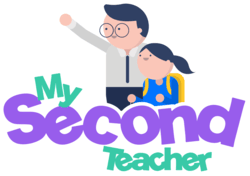.png)
In today’s interconnected world, having digital literacy skills is just as important as traditional literacy. Students of today’s age are well versed with technologies so they have adapted well to e-learning. However, teachers in many parts of the world still struggle to catch up with technological advancements in the education sector.
As education continues to transform with technology, teachers and educators globally have to adapt to teaching strategies that include digital literacy to prepare students for success in a digitally-driven future. As we approach Literacy Day 2024, the focus on expanding digital literacy growth to teachers and educators around the globe becomes even more prominent.
Teacher’s Role in Promoting Digital Literacy
Teachers are the backbone of education. With their guidance, we can bring advancements in education to fruition. Teachers serve as the bridge between traditional educational methods and modern digital tools, helping students navigate and thrive in an increasingly competitive digital landscape.
Statistics show that 80% of students believe using technology helps improve their scores, and 95% of educators leverage technology for teaching and learning. These statistics highlight the significant impact of technology in education, further encouraging the crucial need for teachers to integrate technology-enhanced teaching practices.
International Literacy Day 2024 emphasises the theme of “Promoting Multilingual Education: Literacy for Mutual Understanding and Peace.” This year, the focus is on fostering literacy through multilingual education. Teachers can use digital tools to offer learning materials in multiple languages, allowing students to engage with educational materials in their native language while learning new ones. Digital tools such as interactive videos help make learning easily understandable with visual animation of subject contents. This helps students learn the material despite language barriers.
For example, teachers can use platforms like mySecondTeacher and Jelajah Ilmu, which offer Interactive Videos and eBooks. These platforms offer a comprehensive digital environment where teachers can access from library of resources, video lessons, and data-driven insights to help them navigate student performance better.
The Future of Digital Teaching
Teachers often face challenges with traditional teaching methods, which can be time-consuming and require strict attention to detail. Tasks like manually creating test papers, managing classes, communicating with each student, and assessing their understanding, leave little room for personalised learning.
Platforms like mySecondTeacher and Jelajah Ilmu are at the forefront of this transformation. These platforms encourage a revolutionary educational approach to modern education. Teachers can use these platforms to prepare content that is accessible to students with diverse linguistic backgrounds, by incorporating visual aids, interactive elements, and culturally relevant examples.
Teachers are offered convenient tools to manage daily tasks, plan classroom activities, and monitor students’ academic progress—both online and in the classroom. In one or more ways, these platforms align with the spirit of International Literacy Day, by promoting mutual understanding through a shared digital learning experience.
The future of digital teaching looks incredibly promising, as new trends in educational technology continue to develop. Adaptive learning platforms are changing the way teachers tailor each lesson to fit individual class or student needs. By integrating these technologies, teachers can efficiently adapt to digital teaching methods and support their students’ learning journeys, fostering an inclusive and adaptable learning environment.
